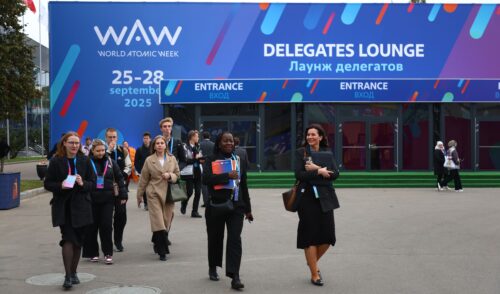
The future of fusion
back to contentsThe event is to be attended by representatives of the world scientific community, governmental officials (for nuclear power regulation and development), world’s largest utilities, ROSATOM’s companies, officers of the IAEA, as well as Russian and international journalists. A delegation of the ITER International Organization will attend.
A broad conference program will include a plenary session, featured sessions, and round-table discussions with participation of internationally acknowledged experts and will cover the following themes: “Magnetic confinement experiments”; “Magnetic Confinement Theory and Modelling”; “Plasma Overall Performance and Control”; “Inertial Fusion Experiments and Theory”; “Innovative Confinement Concepts”; “Fusion Engineering, Integration and Power Plant Design”; “Fusion Nuclear Physics and Technology”; “Materials Physics and Technology”; “Safety, Environmental and Economic Aspects of Fusion” and other. Also on plans is the award ceremony of The Nuclear Fusion Prize.
Atomic St. Petersburg
This will be the first time when St. Petersburg hosts such conference. These IAEA’s conferences, which are the main platform for international expert meetings on fusion, are held biannually. The first such conference was held in Saltsburg in Austria in 1961. ROSATOM is charged with preparing and conducting the conference in 2014.
Last year St. Petersburg hosted the IAEA’s High-Level International Conference “Nuclear Power in the 21st Century”, which was jointly organized by the Agency and the Government of Russia with the support from the Organization for Economic Cooperation and Development (OECD) and ROSATOM. It discussed prospects of the use of nuclear power to produce clean energy, ensure energy security in different countries, reduce atmospheric greenhouse gas releases, and ensure sustainable development. Representatives of 89 world countries took part in the conference.
The Russian contribution
Russia holds one of the key positions in implementing one of the largest international projects on fusion, ITER. This is explained, first of all, by a huge potential the country has in the field of fusion research. Back in 1950 academicians Andrey Sakharov and Igor Tamm suggested using the magnetic field to confine plasma. Later, Russian prominent scientists led by academician Lev Artsimovich designed and implemented the concept of TOKAMAK (after Russian – “ТОроидальная КАмера МАгнитная Катушка” – toroidal chamber magnetic coil) fusion installation. Eventually it became the world leader in controlled fusion and has remained as such today. It was this installation that was used as the basis for the ITER fusion reactor.
Besides, Russia is one of the initiators of the ITER Project. The idea to build an international fusion reactor was put forward and actively supported by presidents Mikhail Gorbachev, Ronald Reagan and François Mitterrand. At present, owing to participation in the Project, Russia has complete design document package for the ITER reactor. Russia’s contribution to the ITER Project is the manufacture and supply of high technology equipment, main systems of the reactor that makes up 10% of the total cost of the reactor construction as per the detailed design.
The conference will be held in the Hotel Park Inn Pribaltiyskaya. Participants can register on-line on the IAEA’s website. To register one needs to get a LogIn and Password from the IAEA. The conference will include an exhibition and two technical tours to institutes, which carry out controlled fusion research and manufacture equipment under the Russian commitments for the ITER project: on October 14 to the D.V. Efremov NIIEFA and on October 15 to the Ioffe FTI.




